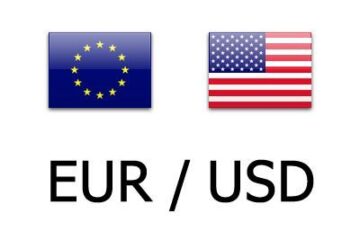Stepping onto the scale is about as American as eating apple pie, watching baseball, and visiting the drive-thru at McDonald’s.
Since U.S. adult obesity rates have doubled since 1990 (from 21.2% in 1990 to 43.8% in 2022 for women, and 16.9% to 41.6% in 2022 for men), you’d think a weight-loss company like Weight Watchers would be thriving.
But when Weight Watchers’ parent company, WW International (WW), declared bankruptcy on May 6, 2025, it marked the end of an era for how Americans lose weight—as well as a massive reorganization for the dieting giant.
At its peak in 2018, Weight Watchers had a $6 billion market cap, and its stock was trading at $100 per share. In 2020, it boasted 4.4 million members.
But digital times change everything. Thanks to the rise of free weight-tracking apps and websites, as well as the introduction of GLP-1 drugs like Ozempic and Wegovy, Weight Watchers’ membership programs, which counted calories and emphasized personal support groups, quickly became the dieting sphere’s dinosaur.
The May 2024 departure of celebrity spokesperson Oprah Winfrey, who had been candid with her weight loss struggles, did further damage.
Oprah revealed that she had lost 40 pounds on Weight Watchers in 2016, but relied on an unnamed weight loss drug to lose even more. Her announcement sent WW shares tumbling 25%.
💵💰Don’t miss the move: Subscribe to TheStreet’s free daily newsletter 💰
In a 2023 CNN interview, Weight Watchers’ former CEO, Sima Sistani, admitted that her company had made a “mistake” by not addressing the stigmas associated with failed diets, saying, “We were contributing to the shame some of our members felt if they did our program and it didn’t work for them.”
One of her solutions was to incorporate a telehealth platform, Sequence, which connected members with doctors who could prescribe weight loss medications, but while the app posted 57% year-over-year growth in Q1 2025, it ultimately wasn’t enough for stakeholders, and Sistani was ousted in September 2024.
Between 2024 and 2025, the company experienced a 12% drop in members, and as of this article’s publication, shares were trading at just 24 cents.
So, can Weight Watchers be saved? Here’s a look at the groundbreaking company’s rise to success and decline into bankruptcy, as well as an examination of the possible path forward.
Weight Watchers’ founder, Jean Nidetch, lost 72 pounds through her program, and kept it off for life.
Adrian Greer Michael Short/Fairfax Media via Getty Images
What is Weight Watchers?
Weight Watchers is a popular weight loss system that offers subscription-based memberships to help customers lose and maintain weight.
The idea behind Weight Watchers began in the early 1960s with Jean Nidetch, a Queens, New York housewife who ate compulsively. Although she tried everything, from pills to “fad diets” and even hypnosis, she simply could not lose weight. In her 2015 obituary, The New York Times reported that she used to hide Mallomars in her hamper and binged on them at night in her bathroom.
By age 38, she weighed 214 pounds and was miserable. So, she invited a group of overweight friends to join her on a diet—with one catch: They had to help talk each other through their “anxiety, doubt, and gnawing hunger.”
Related: Oprah’s net worth in 2025: How the “Queen of Media” got so rich
As it turned out, the program worked. Nidetch lost 72 pounds—and maintained her 150-lb “goal weight” for the rest of her life. In the process, she created a hugely successful business, as two of the people who had joined her program, entrepreneurs Felice and Albert Lippert, asked her to join forces and bring her program to the broader public.
Weight Watchers officially launched in May 1963.
Weight Watchers’ unstoppable rise
The partners rented out space in public buildings and charged members a $2 weekly fee to attend meetings. 400 people showed up to their first official meeting, so they knew they were onto something.
Within a year, Weight Watchers began franchising, keeping 10% of gross earnings. In just four years, the company had grown to 102 franchises across the U.S., Canada, Great Britain, Israel, and Puerto Rico. By January 1968, it had one million members.
Nidetch published her biography, The Memoir of a Successful Loser: The Story of Weight Watchers, and resigned from the company in 1973 but continued to work as a consultant, motivational speaker, and celebrity, often appearing on the Johnny Carson and Merv Griffin talk shows.
Related: What happened to 7 Up? How ‘The Uncola’ faded into obscurity
Through savvy marketing and product development, Weight Watchers continued to grow—not just by holding support groups but also by developing products, including a series of popular cookbooks, a magazine, and later, for working adults who were too tired to cook, a line of frozen dinners.
In 1978, Heinz acquired Weight Watchers for $71.2 million. By the 1990s, weight loss had become a $32 billion industry, and Weight Watchers was its clear leader, commanding $300 million in annual sales.
Oprah Winfrey was a key player even back then, with The New York Times chronicling her “ever-expanding-and-contracting” waistline as she attempted to lose weight from Optifast, maker of liquid diet products. (Spoiler alert: She didn’t.)
While it would take another 24 years for Winfrey to partner with Weight Watchers, the weight loss giant had its hands full from competition from other, upstart diet companies, like Jenny Craig, Slim-Fast, and Nutrisystem. To set itself apart—and ahead—of the competition, Weight Watchers introduced its “points” system, an algorithm that quantified a food based on its amount of carbohydrates, fat, and fiber content.
More on success:
Rihanna’s net worth: Inside the superstar’s business empireAnna Wintour’s net worth: Does the Met Gala contribute to her wealth?Tina Knowles’ net worth: Beyoncé’s mother is a self-made millionaire
Heinz sold Weight Watchers to a private equity firm, Artal Luxembourg, for $735 million in 1999, which took the company public on November 15, 2001, with an opening price of $25.91.
In 2003, Weight Watchers went digital, launching its first website. In 2010, its “points” system was again overhauled: Fruits and veggies received zero points, while sugary and processed foods were given extra points.
That decade, the company also started branching out from the dieting sphere by incorporating fitness and wellness into its memberships. It acquired the Wello and Hot 5 apps along with Weilos, an online community platform. It also forged partnerships with Fitbit and expanded into mindfulness through partnerships with Headspace.
Oprah Winfrey’s very public weight loss struggles were chronicled through her TV show, and later, as a Weight Watchers’ board member and spokesperson.
Lisa Maree Williams/Getty Images
Weight Watchers & ‘The Oprah Effect’
But the company’s biggest deal was with Oprah herself. Her decades-long weight loss journey may have been ridiculed by the media, but millions of “everyday” people saw themselves in her struggles, and her endorsement helped foster a positive, trustworthy environment that affected the company’s bottom line: By 2016, revenues had risen 28%, and the company had gained one million members.
Not only did Oprah serve as Weight Watchers’ spokesperson from 2015–2024; she also joined its Board of Directors and took a 10% ownership stake in WW, investing $43 million into the company. Shares skyrocketed 90% on the news, and over the course of her nine-year relationship with the brand, Oprah took home a reported $221 million.
Weight Watchers today: Can it coexist with GLP-1 drugs?
Masterful at reinvention, in 2018, in a continuing effort to be bigger than dieting, Weight Watchers rebranded itself as WW International. It also did away with its stated weight-loss requirement and renamed its support group meetings “wellness workshops.”
Later that year, the company also launched a controversial app aimed at helping children manage their weight, Kurbo by WW. However, Weight Watchers would pay a $1.5 million fine to the FTC in 2022 after it was found to be illegally collecting children’s data.
But it was the introduction of Ozempic (semaglutide) in 2017, first approved by the FDA to treat type 2 diabetes, that would precipitate Weight Watcher’s demise—and trigger a seismic shift throughout the weight loss industry. The drug was originally formulated to help patients manage their blood glucose, but it had an interesting side effect: Patients experienced, on average, 14.9% weight loss.
Related: The 5 most startling Chapter 11 retailer bankruptcies since 2020
Celebrities and Influencers began posting selfies showcasing their noticeably slimmer frames, while hashtags like #OzempicChallenge started trending on TikTok, amassing more than 250 million views. Its surge in popularity led to widespread Ozempic shortages, and in 2021, Novo Nordisk, the drug’s manufacturer, introduced a new medication with an even higher dose of semaglutide, known as Wegovy. This drug was approved specifically to treat chronic weight management issues for adults with obesity.
When Oprah stepped down from the board of Weight Watchers, she herself admitted that points and pep talks weren’t solely responsible for the reported 50 pounds she lost in 2023: She had also taken a weight-loss drug. And, while she did not identify it specifically, she did explain on Jimmy Kimmel Live! that she wanted to “be able to talk about whatever I want to talk about” on the subject of weight loss without any conflicts of interest.
So, Oprah created an hour-long ABC Primetime special titled “Shame, Blame and the Weight Loss Revolution,” that aired on March 18, 2023. It featured a panel discussion by medical experts who discussed weight-loss drugs such as Ozempic, Mounjaro, and Wegovy with a live studio audience.
Winfrey, meanwhile, donated her remaining shares of WW stock—valued at around $16 million at the time—to the National Museum of African American History and Culture, telling Jimmy Kimmel her reasons were “so nobody can say, ‘Oh, she’s doing that [ABC] special, she’s making money, and promoting …’ No, you cannot say that.”
How does Weight Watchers work?
Since its beginnings in 1963, Weight Watchers has focused on losing weight through diet plans and communal encouragement. Weekly meetings consist of “weigh-ins” and support groups, where neighbors and strangers provide praise when the scale registers lower—and encouragement when it does not.
The Weight Watchers system, which assigns “points” to foods based on their nutritional value, has been updated to reflect each era’s guidelines for “healthy” eating; in general, it included increased servings of fish, fruits, and vegetables, limited portions of bread and dairy, and even fewer sweets, fatty foods, and servings of alcohol.
According to U.S. News and World Report, WW’s current membership program consists of the option to meet online through its mobile app and website, receive coaching online or by phone, or attend in-person meetings.
Related: An in-depth timeline of the GameStop short squeeze saga
WW’s bankruptcy: Will Weight Watchers go out of business?
In a press release on May 6, 2025, WW International announced that it had entered Chapter 11 bankruptcy proceedings, revealing plans for a massive reorganization effort in the hopes of shedding $1.15 billion of excess debt—as well as creating solutions for its customers’ long-term health.
That doesn’t sound like WW is giving up. In fact, in a statement, new CEO Tara Comonte stated, “the decisive actions we’re taking today, with the overwhelming support of our lenders and noteholders, will give us the flexibility to accelerate innovation, reinvest in our members, and lead with authority in a rapidly evolving weight management landscape.”
Weight Watchers has assured its members that it will remain “fully operational” through its reorganization, with a spokesperson telling USA Today, “there will be no impact to members or the plans they rely on to support their weight management goals,” and no foreseeable changes to their membership, pricing, or prescriptions.
Weight Watchers also plans to fast-track the expansion of its Sequence telehealth business as well as remain a publicly traded company.
Will Weight Watchers’ stock recover?
As of May, 2025, WW is considered a penny stock, with shares trading at low prices (typically under $5): On May 15, 2025, WW shares closed at just $0.24.
Penny stocks are typically characterized by low liquidity and high volatility, which means that prices can fluctuate significantly and rapidly.
Although penny stocks are usually found trading on over-the-counter (OTC) markets, WW continues to be listed on the Nasdaq exchange.
Its reorganization strategy includes plans to further expand into the telehealth sphere, which could drive future growth; however, its $1.15 billion debt obligations present a substantial challenge for the company’s recovery.
All penny stocks have the opportunity for sizable gains—as well as steep losses—so care should be taken when considering it as an investment.


